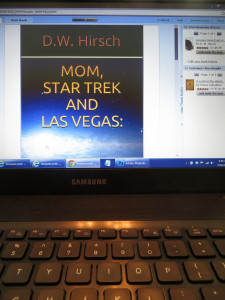According to Merriam-Webster.com, “Mystery” means anything that is not understood. Its origin pre-dates the bible. “Suspense” is defined as nervousness or excitement caused by wondering what will happen. It was first used in the 1500’s. “Minutiae” means trifles, details and smallness, and it dates to 1782, making it the new kid on the vocabulary block. The elements of minutiae can enhance both mystery and suspense, but they are used differently in each genre.
In a mystery, you don’t know who done it; that’s for the protagonist and the readers to figure out. The author plants clues throughout the story, and those clues are often in the minutiae, the small details in the beginning that have large consequences in the end. For example, break a fingernail in Chapter 1 and have that fingernail show up at the scene-of-the-crime in Chapter 7. Mystery readers need to be on their toes, constantly asking themselves, “Why did the author choose this minutiae to express that scene?” Readers won’t fault the author if they figure it out before the end. Instead, they will think of themselves as very clever for having done so.
In a suspense novel, the reader knows who did the dastardly deed, often from the opening chapter. There is no mystery to the story itself. Instead, there is plenty of mystique in the characters, and the readers are left asking, “Why does she always do that?” Readers don’t fault the author if the character’s mystique is double-handed or morally corrupt, so long as the author explains the minutiae in a rational way for that character’s development.
In a mystery, minutiae mystifies the storyline, in suspense it mystifies the characters and their actions.
What you choose say is just as important as when you say it. Character traits are popular with authors because these small details pull double duty with character development, and they don’t have a “sell by” date, meaning you can bring them back in your next chapter or next novel.
One place where minutiae can play a part in your novel is when you want to slow down the pace. Never use minutiae to speed up the action, like: His fist floated into Fred’s flabby gut. He heard him go oomph and gleefully watched Fred double over in pain. Instead say: He hit Fred once and watched him double over. Only use minutiae to slow down the action: The wine’s robust aroma floated in the air and competed with her perfume. He inhaled deeply, slowly; this was a night he had to savor.
Entirely new scenes and romantic moments can also benefit with a sprinkle of minutiae, to let the scene breathe. But this minutiae is only used once to full effect, then condensed for any revisits. Case in point: here’s a “first” scene from my upcoming novel Knock Softly (working title). The characters make several visits to the park and dog run with our protagonist, Edvard, and his two dogs, Rufus and Pudge, throughout the story. The dogs weigh 75 and 25 pounds respectively. (The novel goes into more detail on the dogs, too, but here such detail would only be minutiae.) This scene involves only a small portion of the 1.2-mile walk. Knock Softly is told in present tense.
Long before they arrive at the dog run, Ed has to walk the dogs past a family of oaks that proves to be home to an entire community of squirrels. The trees are a magnificent cluster whose matriarch stands dead center and at least 80 feet tall. The grounds under the oaks are well shaded and almost barren of other trees or tall vegetation. Their broad branches and long, fingered leaves steal all the sun’s rays leaving this part of the walk always cooler, darker. Rufus lifts his ears in eager anticipation and starts pulling on the leash. Ed wraps the leash around his wrist and braces for impact.
Readers revisit this part of the path again in another scene several pages later, but in the second scene, the pace is much faster and it is dialog that sets the pace. The scenery is just the canvas:
They’re getting closer to the oaks and both Ed and Rufus know it. He wraps the leash around his wrist before they get to the shadows and gives it quick jerk to let the dog know who is boss. Ed tells Jane… And the dialog follows.
All the minutiae from the first scene are present in the second, just not on the page. Left in the readers’ thought bubbles are the cluster of trees, the squirrels, and all the other previously established minutiae. To put all of that on the page again would only bog the story down when it wants to run.
And never use the same minutiae twice – that’s worse than marrying your brother-in-law in the same wedding dress.
Next Month: First Impressions
They say you never get a second chance to make a first impression, but much of fiction is character development. Development means change, and suspense means changing those first impressions. To write a great first impression in a novel, you have to first think about what your characters are going to develop into. Then figure out what kinds of darling details, social settings and backstories you need to get them there. Next month we’ll look at how to make a good first impression on the page.
